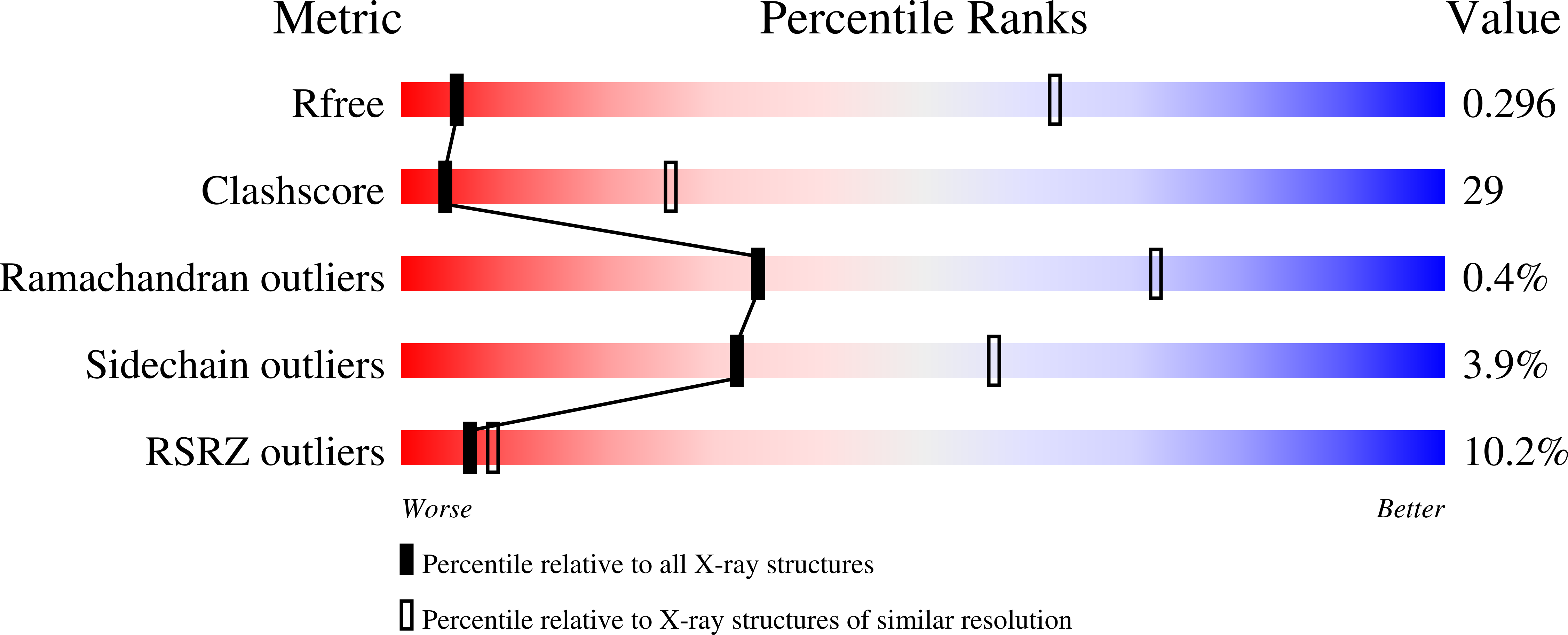Structural interconversions modulate activity of Escherichia coli ribonucleotide reductase.
Ando, N., Brignole, E.J., Zimanyi, C.M., Funk, M.A., Yokoyama, K., Asturias, F.J., Stubbe, J., Drennan, C.L.(2011) Proc Natl Acad Sci U S A 108: 21046-21051
- PubMed: 22160671
- DOI: https://doi.org/10.1073/pnas.1112715108
- Primary Citation of Related Structures:
3UUS - PubMed Abstract:
Essential for DNA biosynthesis and repair, ribonucleotide reductases (RNRs) convert ribonucleotides to deoxyribonucleotides via radical-based chemistry. Although long known that allosteric regulation of RNR activity is vital for cell health, the molecular basis of this regulation has been enigmatic, largely due to a lack of structural information about how the catalytic subunit (α(2)) and the radical-generation subunit (β(2)) interact. Here we present the first structure of a complex between α(2) and β(2) subunits for the prototypic RNR from Escherichia coli. Using four techniques (small-angle X-ray scattering, X-ray crystallography, electron microscopy, and analytical ultracentrifugation), we describe an unprecedented α(4)β(4) ring-like structure in the presence of the negative activity effector dATP and provide structural support for an active α(2)β(2) configuration. We demonstrate that, under physiological conditions, E. coli RNR exists as a mixture of transient α(2)β(2) and α(4)β(4) species whose distributions are modulated by allosteric effectors. We further show that this interconversion between α(2)β(2) and α(4)β(4) entails dramatic subunit rearrangements, providing a stunning molecular explanation for the allosteric regulation of RNR activity in E. coli.
Organizational Affiliation:
Department of Chemistry, Howard Hughes Medical Institute, Massachusetts Institute of Technology, Cambridge, MA 02139, USA.

















